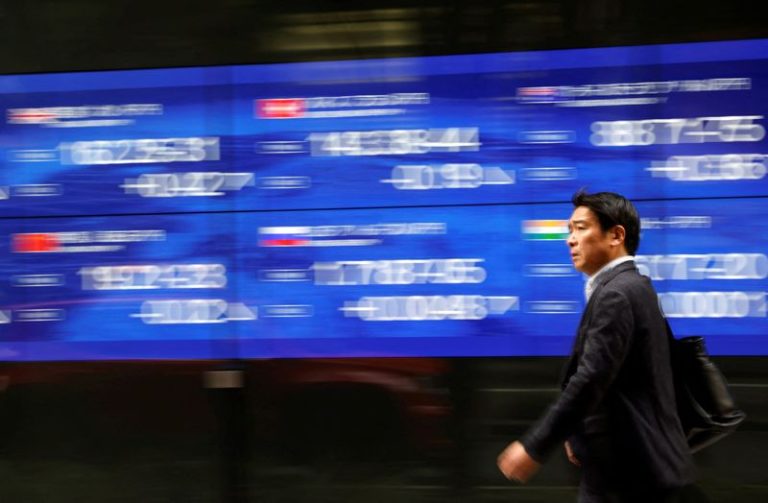By Samuel Indyk and Ankur Banerjee
LONDON (Reuters) -European shares wobbled while the dollar held firm on Tuesday as traders braced for a slate of central bank meetings this week that is likely to see the U.S. Federal Reserve deliver a rate cut and the Bank of Japan stand pat for now.
The pan-continental STOXX 600 was down 0.5%, to a two-week low. Germany’s DAX, France’s CAC 40 and Britain’s FTSE 100 were lower by between 0.1% and 0.7%.
“There’s not that much to hang your hat on in Europe,” said Lars Skovgaard, senior investment strategist at Danske Bank (CSE:DANSKE), citing recent poor economic data.
“Santa Claus is definitely coming with a gift for U.S. equity investors but it seems to be that he’s riding over the sky in Europe, at least for now.”
U.S. equity markets have powered ahead of European markets this year, with the Nasdaq notching another record close on Monday. The S&P 500 is up 27% in 2024, compared to the STOXX 600’s 7% rise.
In Asia, Japan’s Nikkei 225 fell 0.2%, while South Korea’s Kospi fell 1.3%, taking its yearly losses to over 7%, making it Asia’s worst performing market this year.
The market has been under pressure amid political turmoil with President Yoon Suk Yeol impeached and suspended from his duties on Saturday over a short-lived attempt to impose martial law.
EYES ON CENTRAL BANKS
Bitcoin remained nestled near the record high of $107,821 it touched on Monday, and was last at $107,346. The crypto market has been on a tear since the U.S. election in early November as traders bet the incoming Trump administration will bring a friendlier regulatory environment.
Central banks in the United States, Japan, UK, Sweden, Norway, Indonesia and Thailand all meet this week, with the BOJ, the Bank of England, Norges Bank and Bank of Thailand expected to stand pat, while the Riksbank is seen cutting rates.
Bank Indonesia on the other hand is expected to hike interest rates to support the rupiah, which is rooted near its lowest in four months.
The spotlight will be on the Fed and especially on the projection for next year with markets pencilling in a 25-basis- point cut on Wednesday.
After the expected cut this week, markets are pricing in a further 45 basis points of easing in 2025, equal to one quarter-point cut and around an 80% chance of a second.
Charu Chanana, chief investment strategist at Saxo, said the market will be watching for any signs of a “hawkish cut” on Wednesday.
“This means that while the Fed is easing policy, it could signal caution about the pace of future cuts, either through the committee’s updated dot plot or via Chair Powell’s press conference.”
The previous dot plot indicated four rate cuts (100 bps) for 2025, but this could be revised to just three or even two cuts as inflation risks remain elevated, Chanana said.
The dollar index, which measures the U.S. currency against six rivals, was up 0.2% 106.99 and on course for 5% gain for the year.
The yen last fetched 153.84 per dollar after touching a three week low against the dollar on Monday. It has been on the defensive as chances of a hike from the BOJ this week remained slim, with a majority of economists polled by Reuters expecting the central bank to hold interest rates.
In other currencies, the euro stood at $1.0490, on course for a near 5% drop in 2024. Sterling was up 0.1% after hotter-than-forecast pay growth in the three months to October.
“Today’s data will strengthen the Bank’s narrative of gradualism and caution as we head into the new year,” said Sanjay Raja, Deutsche Bank (ETR:DBKGn)’s chief UK economist, who already expected the BoE to hold rates on Thursday.
In commodities, oil prices were soft as investors fretted about Chinese demand ahead of the Fed meeting. [O/R]
U.S. West Texas Intermediate crude was down 1% at $70.04 a barrel, while Brent crude futures eased 0.8% to $73.34 a barrel.
Spot gold was 0.2% lower at $2,647 per ounce, on course for 29% rise in 2024, its strongest year since 2010.

